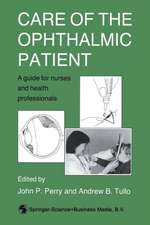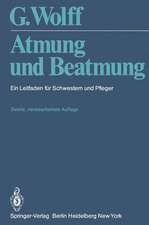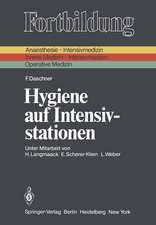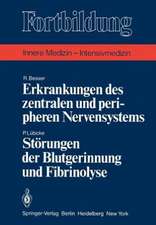Understanding Hydrolats: The Specific Hydrosols for Aromatherapy: A Guide for Health Professionals
Autor Len Price, Shirley Priceen Limba Engleză Paperback – 3 aug 2004
Preț: 231.04 lei
Preț vechi: 243.20 lei
-5% Nou
Puncte Express: 347
Preț estimativ în valută:
44.22€ • 45.68$ • 36.80£
44.22€ • 45.68$ • 36.80£
Carte disponibilă
Livrare economică 05-19 martie
Livrare express 18-22 februarie pentru 31.76 lei
Preluare comenzi: 021 569.72.76
Specificații
ISBN-13: 9780443073168
ISBN-10: 0443073163
Pagini: 300
Ilustrații: 1, black & white illustrations
Dimensiuni: 156 x 234 x 20 mm
Greutate: 0.52 kg
Editura: Elsevier
Locul publicării:United Kingdom
ISBN-10: 0443073163
Pagini: 300
Ilustrații: 1, black & white illustrations
Dimensiuni: 156 x 234 x 20 mm
Greutate: 0.52 kg
Editura: Elsevier
Locul publicării:United Kingdom
Public țintă
Primary markets:Aromatherapy students and practitioners
Massage therapy practitioners and students
Secondary markets
Beauty therapists / estheticians
Pharmacists
Nurses in adult branches especially in palliative care, geriatric nursing
Midwives and nurse-midwives
Manipulative physical therapists
Osteopaths
Chiropractors
Cuprins
Introduction
The first aromatherapy
Is natural safe?
Why are waters not used more?
Sourcing good materials
Advantages of distilled waters
What is their composition?
Scientific proof - what is it?
Other water based plant extracts
Chapter One: Historical background
Egypt - Nile, Edfu, priest embalmers, architects
Aromatics worldwide - China, India, Middle East, Jewish, Greek, Roman
Development of distillation - golden age of the Arabs, alcohol, alchemists
Crusades
Monasteries
Paracelsus
Perfumes
New plants
Still rooms
Renaissance herbals
Hungary water, carmelite water, eau de cologne
Rise of science
Fall and resurrection of plant medicine - 20th century pioneers
Chapter Two: The nature of water
Universal distillation process
Introduction
Basic necessity
Life and death, life giving
Physical power of water
Visual aspect
Water as solvent, cleanser
Judging by water
Water in the body, passage through body
Bottled water
Treatments with water - Thalassotherapy, spa treatments
Scientists who investigated water - Priestley, Cavendish, Watt, Lavoisier, Laplace
Structure of liquid water - hydrogen bonding, polar solvent
Molecules soluble in water, increased dilution
Chapter Three: Terminology and nomenclature
Introduction - what's in a name?
How waters are obtained
Current terminology - aromatic water, essential water, prepared water, distilled water, floral water, hydrolat, medicated water
Colloids, hydrosols, suspensions
Cohobation - water oil, are cohobated waters therapeutic?
Chapter Four: Prepared waters
Identifying the product
Not distilled
Internal use
Fragrant waters - methods of production, pharmacopoea, trituration, preservatives
Addition of alcohol
Hydroessentials
Witch hazel
DIY home made
Chapter Five: The plants utilized
Kinds of plants used
Extraction process - distillation, water quality, pH of water used, still hardware, distillation time
Plants used - which parts of plants
Yield of water
Volatile molecules in distilled waters - quantity, kind of molecules, artefacts in waters
Therapeutic value
Chapter Six: Physical aspects
Keeping qualities - storage, temperature, time
Temperature
Time
Preservatives
Appearance
Density
pH
Odour
Quality
Cost
Chapter Seven: Discussion of Analyses
Discussion of molecules found in hydrolats
Table of molecules found in waters
Chemistry of aromatic molecules
Chapter Eight: Alphabetical listing of waters with description, properties and indications
Chapter Nine: Methods of use and dosage
Reasons for using waters
Uses of distilled waters
External use - baths, compresses, douches, eyes, hair, nebulizers, skin care, creams, lotions, sprays, vaporisers
Internal uses
Beverages, teas
Culinary use
Digestive problems
Gargles, mouthwashes
Rectal use
Vaccinations
Dispersants
Cautions and safe use
Chapter 9a: Recipes
Common ailments: circulation, colds and flu, detoxification, diarrhoea, digestive, eyes, general health, hair, hypertension, legs, lice, lymph, nervous system, respiratory, rheumatism, skin, slimming, teeth, tonic, urinary problems
Baby and child care
Culinary recipes
Making your own hydrolats
Chapter Ten: Case studies
Chapter Eleven: Teas, infusions, decoctions
Appendix A: Therapeutic index
Appendix B: Index of therapeutic properties of hydrolats
Appendix C: Plant list - Scientific and common names
Appendix D: Analyses of hydrolats
Glossary
References
Index
The first aromatherapy
Is natural safe?
Why are waters not used more?
Sourcing good materials
Advantages of distilled waters
What is their composition?
Scientific proof - what is it?
Other water based plant extracts
Chapter One: Historical background
Egypt - Nile, Edfu, priest embalmers, architects
Aromatics worldwide - China, India, Middle East, Jewish, Greek, Roman
Development of distillation - golden age of the Arabs, alcohol, alchemists
Crusades
Monasteries
Paracelsus
Perfumes
New plants
Still rooms
Renaissance herbals
Hungary water, carmelite water, eau de cologne
Rise of science
Fall and resurrection of plant medicine - 20th century pioneers
Chapter Two: The nature of water
Universal distillation process
Introduction
Basic necessity
Life and death, life giving
Physical power of water
Visual aspect
Water as solvent, cleanser
Judging by water
Water in the body, passage through body
Bottled water
Treatments with water - Thalassotherapy, spa treatments
Scientists who investigated water - Priestley, Cavendish, Watt, Lavoisier, Laplace
Structure of liquid water - hydrogen bonding, polar solvent
Molecules soluble in water, increased dilution
Chapter Three: Terminology and nomenclature
Introduction - what's in a name?
How waters are obtained
Current terminology - aromatic water, essential water, prepared water, distilled water, floral water, hydrolat, medicated water
Colloids, hydrosols, suspensions
Cohobation - water oil, are cohobated waters therapeutic?
Chapter Four: Prepared waters
Identifying the product
Not distilled
Internal use
Fragrant waters - methods of production, pharmacopoea, trituration, preservatives
Addition of alcohol
Hydroessentials
Witch hazel
DIY home made
Chapter Five: The plants utilized
Kinds of plants used
Extraction process - distillation, water quality, pH of water used, still hardware, distillation time
Plants used - which parts of plants
Yield of water
Volatile molecules in distilled waters - quantity, kind of molecules, artefacts in waters
Therapeutic value
Chapter Six: Physical aspects
Keeping qualities - storage, temperature, time
Temperature
Time
Preservatives
Appearance
Density
pH
Odour
Quality
Cost
Chapter Seven: Discussion of Analyses
Discussion of molecules found in hydrolats
Table of molecules found in waters
Chemistry of aromatic molecules
Chapter Eight: Alphabetical listing of waters with description, properties and indications
Chapter Nine: Methods of use and dosage
Reasons for using waters
Uses of distilled waters
External use - baths, compresses, douches, eyes, hair, nebulizers, skin care, creams, lotions, sprays, vaporisers
Internal uses
Beverages, teas
Culinary use
Digestive problems
Gargles, mouthwashes
Rectal use
Vaccinations
Dispersants
Cautions and safe use
Chapter 9a: Recipes
Common ailments: circulation, colds and flu, detoxification, diarrhoea, digestive, eyes, general health, hair, hypertension, legs, lice, lymph, nervous system, respiratory, rheumatism, skin, slimming, teeth, tonic, urinary problems
Baby and child care
Culinary recipes
Making your own hydrolats
Chapter Ten: Case studies
Chapter Eleven: Teas, infusions, decoctions
Appendix A: Therapeutic index
Appendix B: Index of therapeutic properties of hydrolats
Appendix C: Plant list - Scientific and common names
Appendix D: Analyses of hydrolats
Glossary
References
Index


















